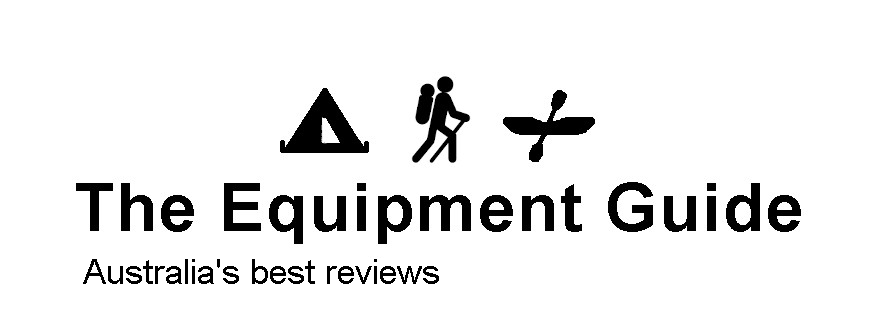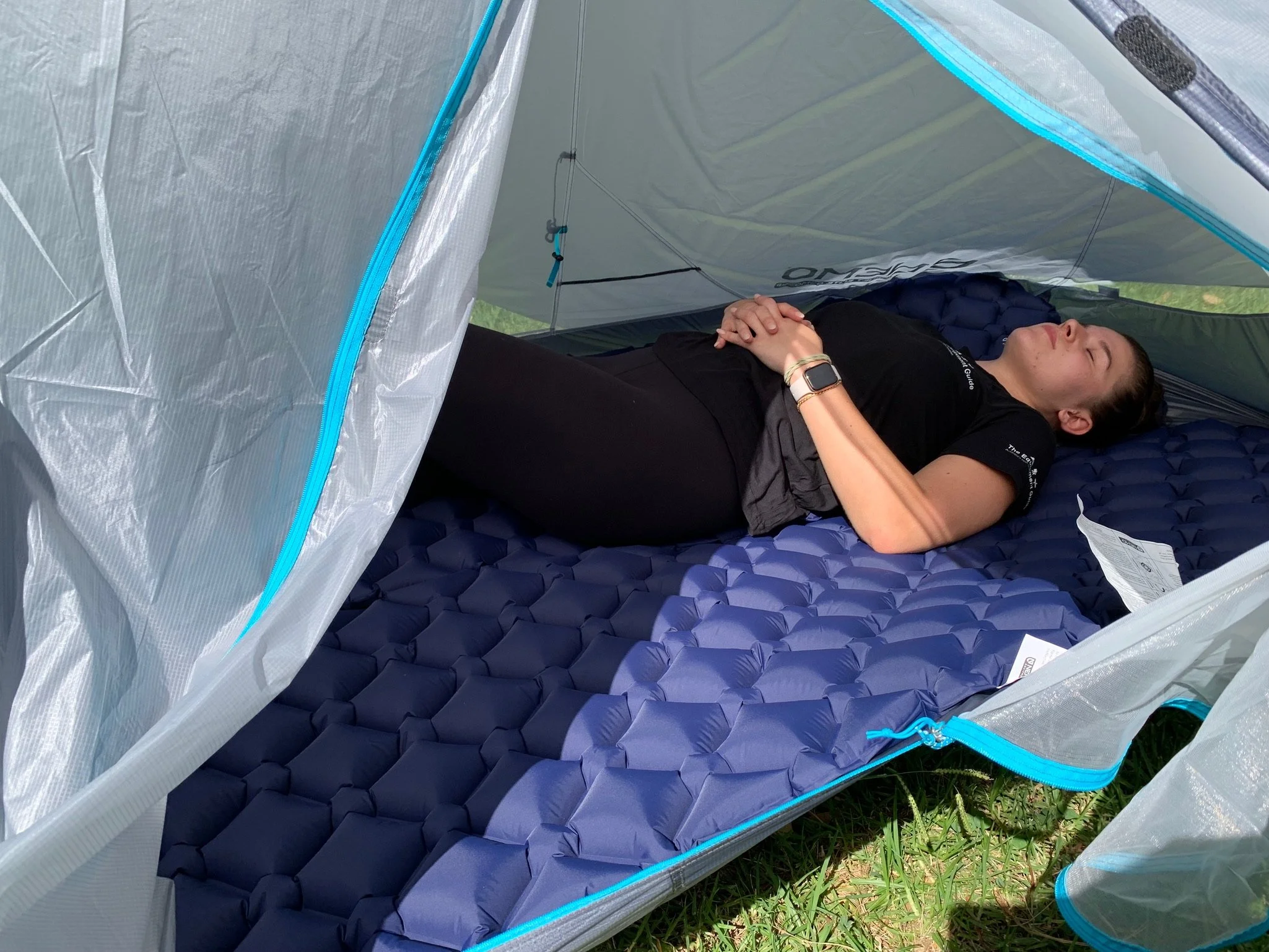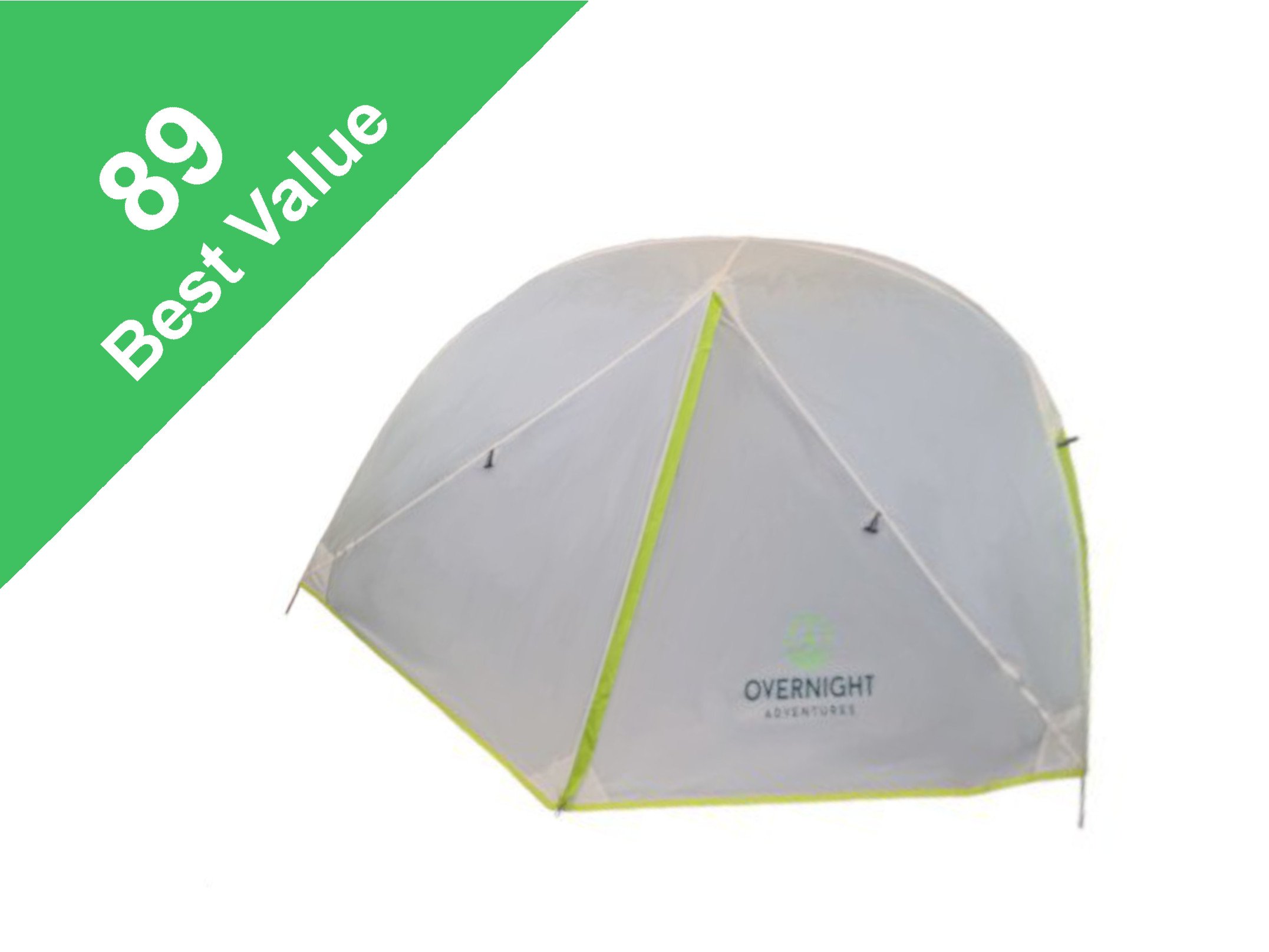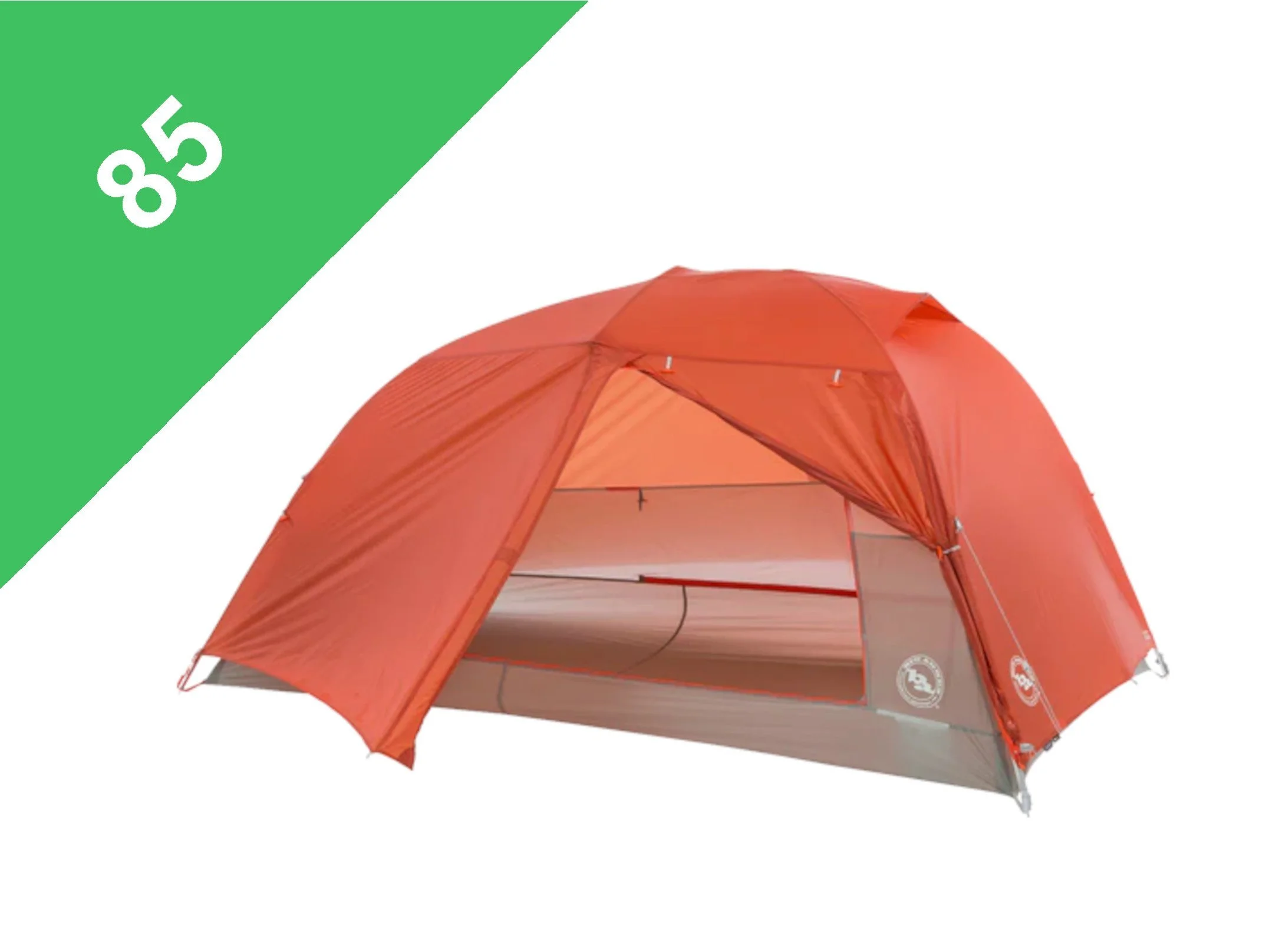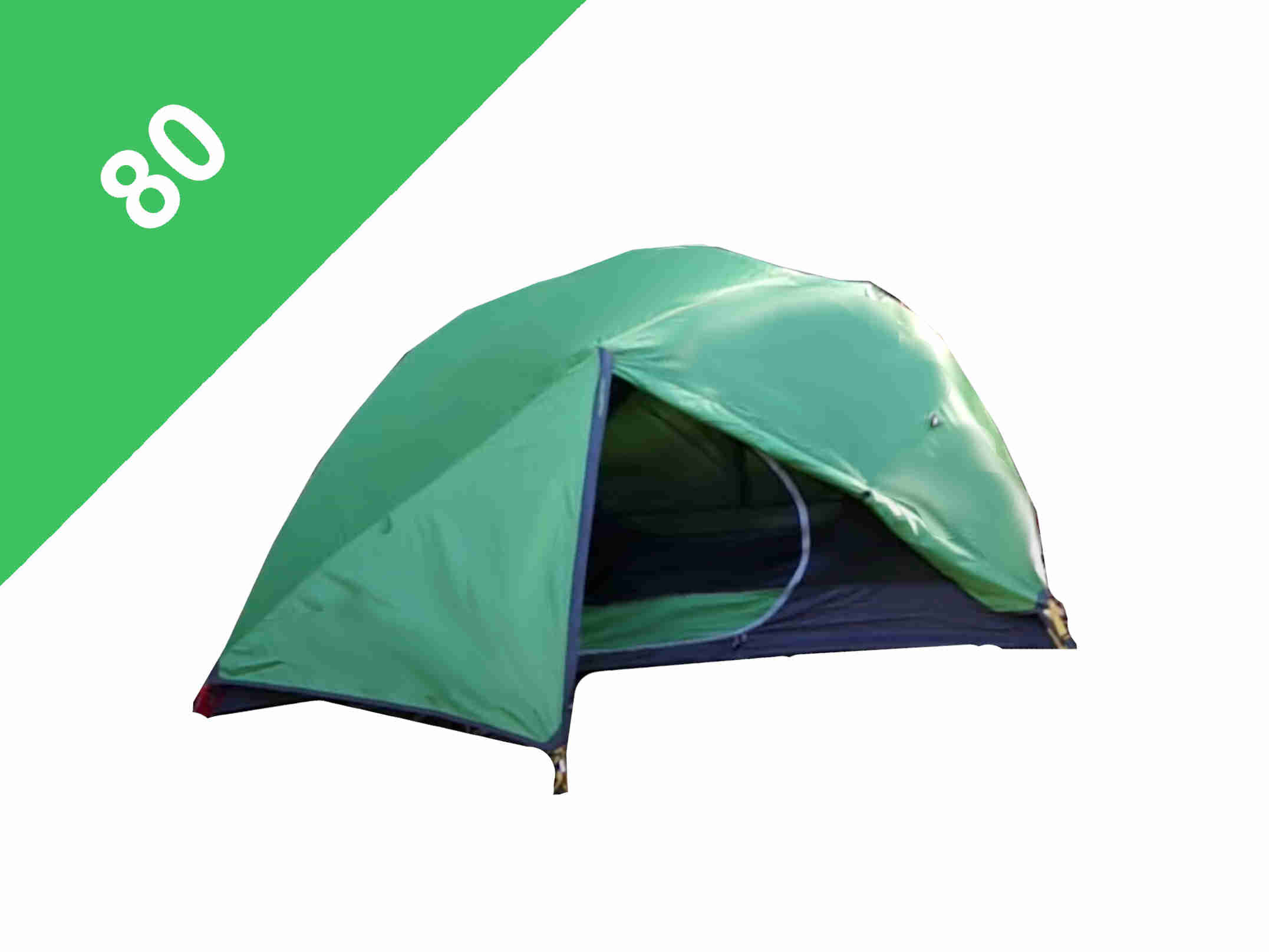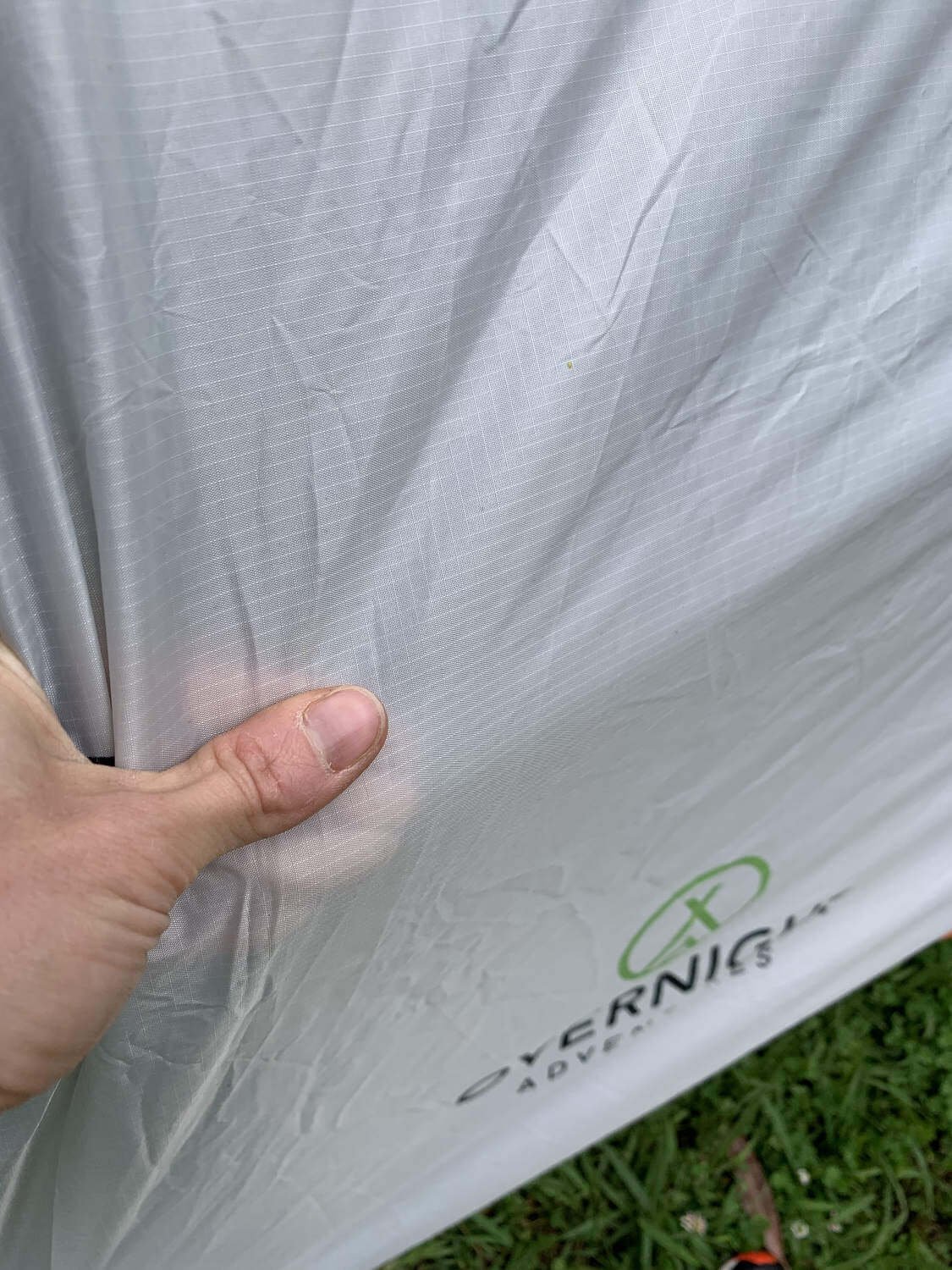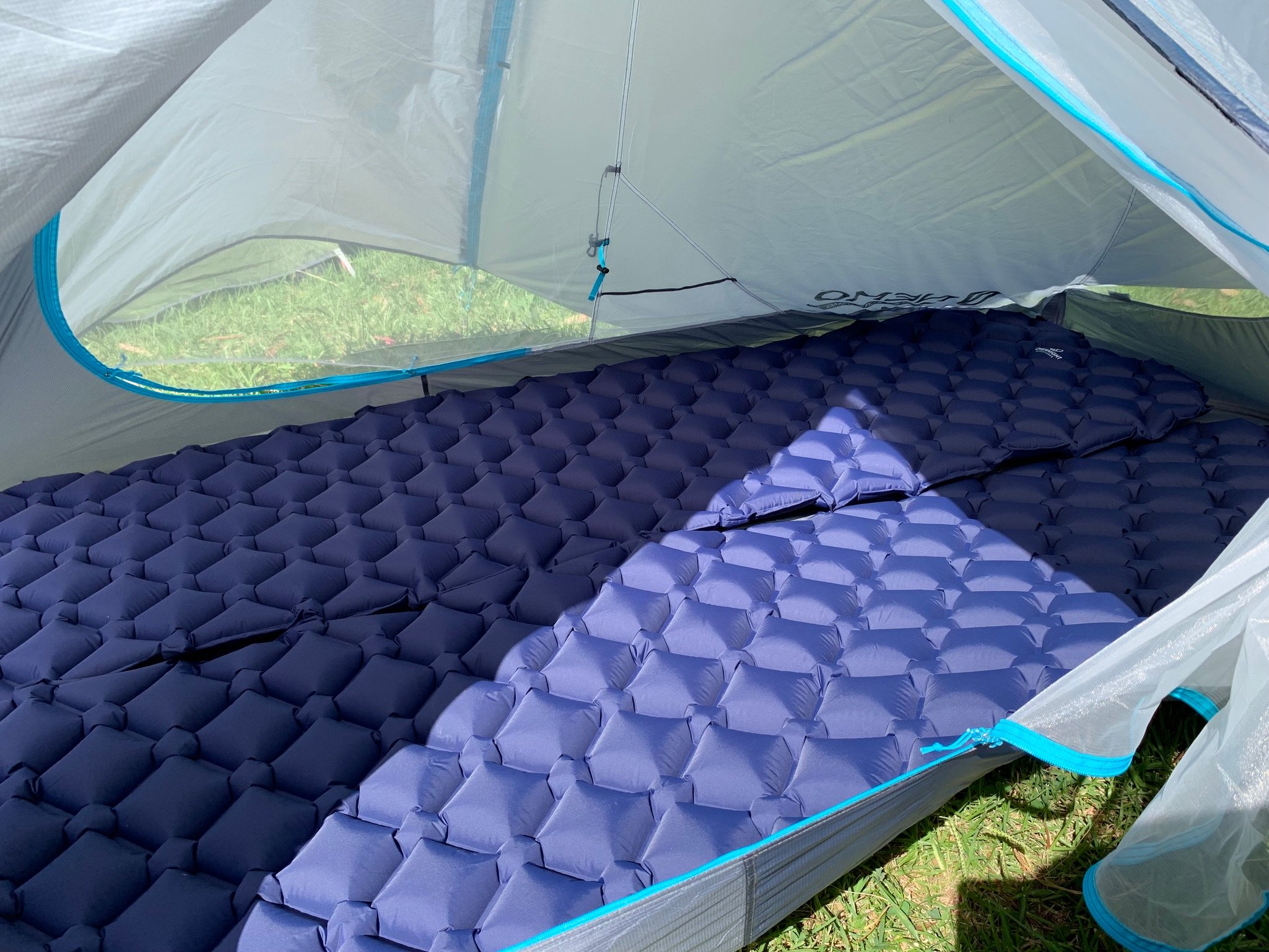Best Hiking Tent Australia 2025
Tested in the Australian Alps, bush trails and remote tracks.
This guide is for anyone looking for a reliable hiking tent, whether you’re a complete beginner, a budget-conscious camper, a touring adventurer, or a family wanting something dependable for weekend trips. We chose our top picks based on the things that matter most: stability in tough weather, long-lasting durability, overall performance and value for money. To make sure our recommendations are genuinely useful, we put in the work. We reviewed more than a hundred two-person hiking tents suited to Australian conditions and tested the standout models hands-on. You can watch our video breakdown or dive into the full reviews using the ‘Read Full Review’ buttons below. Looking for something bigger? We’ve also rounded up Australia’s best family tents.
Our Top Picks:
Best overall: MSR Hubba Hubba LT
Best Budget Hiking Tent: OA Hiker Pro
Best Lightweight/Ultralight Tent: Nemo Hornet Elite OSMO
Best 4-Season or Alpine Tent: Hilleberg Nammatj 2
Updated 25th November 2025: Added FAQs about hiking tents
Hiking Tent Reviews
MSR Hubba Hubba LT
Price At Time Of Writing | $945.16
Overall Rating | 95
Comfort | 9
Construction | 9
Features | 9
Size/Weight | 8
Versatility | 10
Packed Size - 46x15cm
Weight - 1.8kg
Sleeping Size - 2.5sqm
Best For: Multi-day hikers
Pros - Light, spacious, reliable
Cons - Expensive
Overall - A good, allround hiking tent
Nemo Hornet Elite OSMO
Price At Time Of Writing | $899.91
Overall Rating | 94
Comfort | 9
Construction | 9
Features | 9
Size/Weight | 10
Versatility | 7
Packed Size - 48x10x5cm
Weight - 0.936kg
Sleeping Size - 2.5sqm
Best For: Ultralight backpackers
Pros - Ultralight, compact, clever design
Cons - Fragile, tight space, pricey
Overall - Top choice for weight saving
Mont Moondance 2
Price At Time Of Writing | $829.95
Overall Rating | 93
Comfort | 10
Construction | 9
Features | 9
Size/Weight | 7
Versatility | 8
Packed Size - 49x15cm
Weight - 2kg
Sleeping Size - 2.9sqm
Best For: General hiking and camping
Pros - Durable, roomy, easy setup
Cons - Bulkier, heavier than some, price
Overall - A reliable and comfortable tent
Hilleberg Nammatj 2
Price At Time Of Writing | $1,799.95
Overall Rating | 93
Comfort | 9
Construction | 9
Features | 9
Size/Weight | 7
Versatility | 9
Packed Size - 51x17cm
Weight - 3kg
Sleeping Size - 2.8sqm
Best For: Harsh alpine conditions
Pros - Extremelt tough, very weatherproof
Cons - Heavy and expensive
Overall - An expedition-grade hiking tent
Nemo Dragonfly OSMO
Price At Time Of Writing | $699.95
Overall Rating | 93
Comfort | 7
Construction | 9
Features | 9
Size/Weight | 10
Versatility | 8
Packed Size - 50x12cm
Weight - 1.4kg
Sleeping Size - 2.7sqm
Best For: Thru-hikers and fastpackers
Pros - Lightweight, good storage, well-ventilated
Cons - Delicate fabric, smaller interior
Overall - A balanced, ultralight option
MSR Access 2
Price At Time Of Writing | $1,530.00
Overall Rating | 92
Comfort | 8
Construction | 8
Features | 9
Size/Weight | 7
Versatility | 10
Packed Size - 46x15cm
Weight - 1.72kg
Sleeping Size - 2.7sqm
Best For: Skii tours and winter treks
Pros - Warm, sturdy, winter-ready
Cons - Heavy for backpacking, could condense smaller
Overall - A reliable, cold-weather tent
Hilleberg Rogen 2
Price At Time Of Writing | $1,797.95
Overall Rating | 90
Comfort | 8
Construction | 9
Features | 8
Size/Weight | 7
Versatility | 8
Packed Size - 46x15cm
Weight - 2.2kg
Sleeping Size - 2.8sqm
Best For - Frequent campers in tough conditions
Pros - Rugged build, roomy for two, strong weather shield
Cons - Hefty, pricey, small roof-pooling risk
Overall - Premium durable three-season tent
Heimplanet Fistral
Price At Time Of Writing | $1,199.00
Overall Rating | 89
Comfort | 9
Construction | 7
Features | 9
Size/Weight | 6
Versatility | 8
Packed Size - 38x20cm
Weight - 2.9kg
Sleeping Size - 2.9sqm
Best For: Adventure weekends where setup speed matters
Pros: Fast pitch, roomy, strong structure
Cons: Heavy, pump needed, a bit wobbly
Overall: Clever tent with trade-offs
OA Hiker Pro
Price At Time Of Writing | $349.95
Overall Rating | 89
Comfort | 7
Construction | 8
Features | 8
Size/Weight | 7
Versatility | 9
Packed Size - 48x15cm
Weight - 2.1kg
Sleeping Size - 2.8sqm
Best For: Those wanting value on a budget
Pros - Quality build, compact, affordable
Cons - Sparse internal storage
Overall - Best budget all-round tent
MSR Elixir 2
Price At Time Of Writing | $499.00
Overall Rating | 88
Comfort | 8
Construction | 8
Features | 9
Size/Weight | 5
Versatility | 8
Packed Size - 51x17cm
Weight - 2.7kg
Sleeping Size - 2.69sqm
Best For: Campers wanting comfort over minimal weight
Pros - Durable, good ventilation, roomy vestibules
Cons - Heavy, bulky pack-down
Overall - A versatile crossover tent
Big Agnes Copper Spur UL2
Price At Time Of Writing | $930.00
Overall Rating | 85
Comfort | 7
Construction | 8
Features | 8
Size/Weight | 7
Versatility | 5
Packed Size - 50x15cm
Weight - 1.4kg
Sleeping Size - 2.69sqm
Best For: Fastpacking and long hikes
Pros - Very light, liveable, good ventilation
Cons - Asymmetrical design, less winter resistance
Overall - A well-priced, ultralight tent
Marmot Tungsten
Price At Time Of Writing | $521.00
Overall Rating | 85
Comfort | 8
Construction | 7
Features | 8
Size/Weight | 6
Versatility | 6
Packed Size - 54x22cm
Weight - 3kg
Sleeping Size - 3.2sqm
Best For: Campers who want a cheap, comfortable, mixed-weather tent
Pros - Durable, easy entry, large living space
Cons - Heavy, bulky when packed
Overall - A sturdy, dependable tent
Wecshel Exogen 2
Price At Time Of Writing | $629.95
Overall Rating | 85
Comfort | 7
Construction | 7
Features | 8
Size/Weight | 7
Versatility | 6
Packed Size - 55x19cm
Weight - 1.93kg
Sleeping Size - N/A
Best For: Backpackers in harsh, wet climates
Pros - Sturdy build, two vestibules, wind-resistant design
Cons - Poor airflow in heat, slightly heavy, inner-first pitch tricky in rain
Overall - Excellent for cool and wet weather
Big Agnes Tiger Wall UL2
Price At Time Of Writing | $770.00
Overall Rating | 84
Comfort | 7
Construction | 6
Features | 7
Size/Weight | 8
Versatility | 6
Packed Size - 46x14cm
Weight - 1.13kg
Sleeping Size - 2.6sqm
Best For: Careful hikers who want minimal weight
Pros: Very lightweight, great ventilation, eco fabric
Cons: Tight for two, fragile, lacks fly-vent option
Overall: Ultralight, but delicate tent
BlackWolf Wasp UL
Price At Time Of Writing | $299.00
Overall Rating | 80
Comfort | 6
Construction | 7
Features | 9
Size/Weight | 3
Versatility | 5
Packed Size - 54x22cm
Weight - 3kg
Sleeping Size - 3.2sqm
Best For: Campers wanting extra room
Pros - Spacious interior
Cons - Heavy, poor ventilation
Overall - A tent better suited for casual or car camping
Naturehike Cloud-Up 2
Price At Time Of Writing | $209.00
Overall Rating | 73
Comfort | 5
Construction | 3
Features | 4
Size/Weight | 8
Versatility | 3
Packed Size - 40x13cm
Weight - 1.8kg
Sleeping Size - 2.6sqm
Best For: Solo or light-packer backpacking
Pros - Affordable, light, waterproof
Cons - Small interior, minimal storage
Overall - A functional tent that’s tight for two
Vango Nevis 200
Price At Time Of Writing | $235.00
Overall Rating | 72
Comfort | 2
Construction | 5
Features | 5
Size/Weight | 7
Versatility | 3
Packed Size - 46x15cm
Weight - 2.0kg
Sleeping Size - 2.6sqm
Best For: Beginners or short-trip hikers
Pros - Budget friendly, decent weather resistance, quick pitch
Cons - Cramped space, limited storage, tricky setup in bad weather
Overall - Good starter tent that’s not without its compromises
Watch our in-depth analysis by category
Watch our in-depth analysis by category
Advice we’d give to a friend
The Basics
How important is weight? - Weight does make a big difference to your hiking enjoyment; however, it’s not necessarily the defining feature you should look for. Some models reduce weight by cutting back on the sleeping size or quality, but the best lightweight hiking tents don’t. In our view, a good quality tent weighing around 2kg is light enough. When we analyse weight, we’re looking at the typical trail weight of the tent (eg. what we’d actually take hiking, which excludes items like footprints, non-essential pegs etc).
How many ‘season’ tent do I need? - In almost all conditions in Australia, a 3-season tent is best. Four-season tents are more for very cold/snowy conditions, so unless you are planning on hiking in Tasmania in winter, 3 is enough. Another thing to consider is that 4-season tents trap the heat and can get very hot in the warmer months which is when most of us are hiking anyway. All tents reviewed are 3-season, 2-person hiking tents for this reason.
Are hiking tents easy to set up? - Yes. Almost all the models we tested take only a couple of minutes to set up. The best hiking tents are very cleverly designed and easy to use.
What features are important? - In terms of cosmetic items, we’d want something with double vestibules for a bit of extra storage space, single or double pole setup, and at least 2 internal pockets. Weight, durability and a comfortable sleeping space are obviously the other key features that make up the best hiking tents in Australia, which we talk about in our comprehensive hiking tent reviews by category below.
Budget
When it comes to 2 person hiking tents, we think you can get something decent without dropping a ton of cash. There are always exceptions to the rule, but at the time of writing, we could break the market into three categories:
Over $800 - This will typically get you the best lightweight hiking tents.
$400 to $800 - These tents are still great and not really that much different to the high-end models. There are some really great options in this price range as well.
Under $400 - Typically speaking, these tents are cramped or made from cheap materials that can fall apart. We suggest spending a bit more so you don’t regret your purchase.
Think about how will you use it
Are you going to only use it for hiking or camping as well? Will you go on short hiking trips or long trips? These are important factors to consider if you are going to get an allrounder, pure hiking tent or something better suited to camping.
Considerations for Australian Conditions
Australia’s trails and weather can be pretty varied, so it’s worth thinking about how your tent will cope. From hot, dry outback conditions to cooler alpine regions, you want something that’s durable, well-ventilated and able to handle the occasional heavy rain.
A few practical tips for Australian hikers:
Ventilation - Australian summers can get hot and humid, so a tent that breathes will make a huge difference, preventing condensation and keeping you comfortable at night.
UV resistance & sun damage - The harsh Aussie sun can degrade fabrics over time. Look for tents with UV-protected flysheets and covers to keep the material lasting longer.
Durable materials - Strong flysheets and floors help cope with rough terrain, rocky tracks, or sharp surfaces.
Freestanding design - Makes setup easier on uneven or hard ground, where pegging can be tricky.
Local warranty and repairs - Buying from brands with Australian distributors means easier warranty claims and access to replacement parts if needed, saving hassle during multi-day hikes or longer trips.
Choosing a tent with these points in mind will make hiking across Australia far more comfortable and stress-free, whether it’s a weekend getaway or a multi-day adventure.
Safety Checklist
Check Track and Weather Conditions - Always verify trail status and weather forecasts before heading out, using official sources like Parks Victoria and Trail Hiking Australia for updates.
Inform Someone of Your Itinerary - Share your planned route and expected return time with a trusted person, and in case of emergency, contact 000 immediately.
Carry Essential Safety Gear - Equip yourself with a map, compass, first aid kit and sufficient water, and possibly consider a personal locator beacon (PLB) if you’re hiking to remote areas.
Ratings By Category
Method
After reviewing the market we pick what we think will be the best hiking tents in each category from a variety of retailers. Each product selected gets 50 points automatically just for being selected. We then perform field tests and in person assessments to rank them out of 10 on the following categories: Comfort, Construction, Features, Size/Weight and Versatility.
Rankings are adjusted or weighted based on importance and how much they vary e.g. some categories will be categorised from 1 to 10 whereas others 4 to 9 etc. but there are sometimes outliers as well. We have tried our best to paint an accurate picture of how we rate each tent overall and why.
If you are looking for the best hiking tent in Australia, this is where we hope to provide you with all the details. We believe good hiking tent reviews should provide you with all the info you need to decide.
Testing Methodology
Before recommending any tent, we put it through real-world use in varied Australian conditions. From setting up in the wind, packing down in the cold, sleeping through rain and seeing how it holds up over multiple trips, we do it all. Our goal is to test tents the way real hikers, couples, friends and even solo campers will use them, not just in perfect weather.
To make sure our hiking tent reviews are accurate, trustworthy and genuinely useful to real hikers, we go through a structured testing process that combines controlled assessments with extensive field use. Each tent is tested across varied weather conditions, terrain types and trip styles (overnight hikes, multi-day treks, alpine camps) to see how it performs where it matters most: in the wild.
Want the full breakdown of our testing process? Click the drop-downs below to learn about how we test, what we measure and how those results feed into our ratings.
-
Before heading into the bush, beach or wherever we’re headed, each tent undergoes a full inspection and baseline setup to make sure what’s promised on paper matches reality.
Unboxing and Component Check - We confirm all components are present and as advertised: fly, inner tent, poles, pegs, guy lines, stuff sacks, repair kits and footprint (if included). Any missing or substituted parts are documented.
Material and Construction Assessment - We look for weak points such as loose threads, incomplete seam taping or plastic hardware likely to fail under tension. We also closely examine:
Fabric quality (fly and inner denier, coatings, mesh integrity)
Seam sealing and stitching consistency
Pole material and joint quality
Zippers, toggles, guy points and attachment systems
Weight and Packed Size Check - Using scales and measuring tools, we record the specs. These are compared against manufacturer specifications to make sure our reviews are transparent for weight-conscious hikers. These specs inlude:
Total packed weight (including poles, pegs, stuff sacks)
Minimum trail weight (tent, fly, poles only)
Packed dimensions and compressibility in its sack
First-Time Pitch Test - We also assemble the tent fresh out of the bag to test setup clarity, pole architecture, intuitive design and time required to pitch. We note if instructions are clear, colour-coded components work simply enough and whether one person can pitch it without help.
-
Each tent is field-tested over multiple nights in real hiking conditions, such as sheltered bush camps and exposed alpine ridges. We do this to test the tent’s performance and liveability. Some of what we test includes:
Wind Resistance and Stability - During breezy or gusty conditions, we test how well the tent holds shape, resists deformation and maintains tension. We watch for flutter, pole flex and anchoring reliability when guy lines are fully deployed.
Rain and Weatherproofing - We see how the tent fares when it’s raining (we’ve also tested some with controlled hose testing). We also check how easy it is to enter/exit without letting rain into the inner canopy. We monitor:
Fly fabric waterproofness and beading
Seam leakage or inner condensation
Ground seepage through floor material
Ventilation and Condensation Control - Another element we test is sleeping in the tent during humid or cold conditions to check how the tent ventilates. We rate airflow efficiency, vent placement and how well the tent mitigates overnight condensation on the inner walls. This is very important for warm environments.
Internal Space and Livability - Multiple of our testers test the tents to determine how liveable they feels on longer trips or in bad weather. Some of what they check include:
Floor space (sleeping mat fit, shoulder and head clearance)
Vestibule storage capacity (packs, boots, gear)
Ability to sit up, change clothes or cook in vestibule (if safe)
Ease of Use in Real Conditions - We also try to test the tents in ways people would use them in varying situations, such as at night. For example, zipping doors in the dark, adjusting vents, re-tensioning guys in the wind, re-entering the tent with wet gear and how forgiving the design is when fatigued or wearing gloves.
-
Durability is so important for tents, as they’re gear that will be used for extended periods. Due to this, we subject each model to repeated setup cycles and exposure to typical backcountry wear.
Pitching and Packing Repetition - The tent is pitched and packed multiple times to test:
Pole fatigue or splintering
Peg bending or deformation
Fabric wear around stress points and pole sleeves
Abrasion and Ground Contact - We use the tent on various surfaces (grass, gravel, compacted dirt) and monitor for floor abrasion, scuffing and any coating wear. If a footprint is recommended, we test with and without to note differences.
UV and Weather Exposure - Where possible, we leave the fly pitched in sunlight to monitor fading, hydrostatic head degradation or fabric delamination. We also keep the tents exposed to moisture for long periods to test for mould or odour retention.
Hardware and Component Stress - Zippers are opened and closed repeatedly, guy points tensioned hard and toggles tested for breakage. We also take note of any failure of line locks, pole clips or Velcro attachments.
-
Beyond tent performance, a great hiking tent must be practical in real trail scenarios.
Setup Speed and Solo Pitching - We time setup and pack-down, testing both in good conditions and when we’re tired. We rate whether the tent can be pitched by one person in wind or rain.
Packability and Gear Integration - We see how easily the tent repacks into its bag, how much space it take up in a hiking pack and whether poles or fly can be packed separately for load sharing.
Modularity and Versatility
We also test alternate pitch options: fly-only fast pitch, inner-only bug setup (if supported) and ability to withstand shoulder-season conditions with snow or frost.
-
Each tent is scored across five core categories to fairly reflect real-world priorities. Rather than focusing on a single metric, we balance comfort, construction, features, size/weight and versatility to understand how well a tent performs for different types of people.
Comfort - We assess internal space, headroom, ventilation, and how livable the tent feels over multiple nights. Tents that balance space with warmth and airflow score highest.
Construction - This covers material quality, stitching, pole strength, seam sealing and overall durability. Tents built to withstand repeated pitching and harsh weather score higher..
Features - We test practical additions such as vestibules, storage pockets, gear lofts, ventilation panels and ease-of-use details like colour-coded poles or quick-release buckles.
Size/Weight - We factor in packed size, trail weight and how manageable the tent is to carry or store. Ultralight models are scored favourably for hiking, while heavier tents are judged within context.
Versatility - We consider how adaptable the tent is across different environments and uses. Tents that handle both warm and wet conditions, or transition between car camping and hiking, score higher.
Each tent is scored out of 10 across core performance categories. These scores are then weighted to produce our overall rating. This transparent system makes sure no tent excels by strength alone, only by overall performance and suitability for real-world camping.
Scores are normalised and adjusted for exceptional performance (ultralight tents with high protection or heavy tents with fantastic stability). We try to be as transparent as possible, so strengths and weaknesses are noted down.
Our goal is to provide hikers with honest, experience-based insights that go beyond specs, making sure their tent choice stands up to real-world adventure.
Comfort
Comfort looks at the size of the sleeping space, including these three main elements: floorspace, headroom and layout of the design.
There can be quite a bit of difference in this area. The Vango Nevis 200 for instance, has so little room that two people must lie head to toe. The Naturehike Cloud-Up 2 review has a design that has sloped walls, which reduces the already cramped space. For that reason, we wouldn’t buy either of those. In the mid-range and best hiking tents in Australia, there isn’t a great deal of variation, though. For instance, the OA Hiker Pro is a little bit shorter than some of the other models and the Nemo Hornet has less room at the feet, but these are fairly minor differences. In our view, a spacious, symmetrical space is better, but it is not the be all and end all.
Vango Nevis 200’s cramped interior
MSR Hubba Hubba LT has a comfortable space
Construction
Construction essentially looks at materials used and craftmanship. Fabrics and pole materials play a massive role in how durable it will be. There is usually a trade-off here between weight, quality and cost.
Strong aluminium poles are important, as fibreglass tends to snap, which is the last thing you want when you are in the middle of the bush. Ripstop waterproof materials with a decent PU (1200+) are also going to keep you dry and will be strong. Mont has a blog post about waterproofing if you want to learn more. These are probably the main things we suggest looking out for when looking for the best hiking tents. Some of the best hiking tents have thicker gauge poles, like the Mont Moondance 2 with its 9.6mm poleset, a higher denier (density) fabric or better cinch straps, which can help with durability. On the flip side, budget models such as the Naturehike Cloud-Up 2 or Vango Nevis 200 have some of these features, but the design and layout of their poles make the overall structure weak.
Mont Moondance 2 Quality Poles
OA Hiker Pro Ripstop Fly
Features
Features look at the more cosmetic liveability features such as the number of vestibules, privacy screens, number of pockets and ease of setup.
Important things to look out for here are double vestibules, given that it’s a 2-person tent, as they provide extra space for each person to store their hiking pack or other items. A single-pole setup is handy, as is having a few pockets to put a head torch or other things you want close by. Privacy screens are also nice to have. All of the mid- to high-range hiking tents we reviewed have most of these features. The Vango Nevis 200 was a bit challenging to set up, and the Naturehike Cloud-Up 2 has one very narrow vestibule and is light on features.
OA Hiker Pro Single Pole Setup
The MSR Elixir 2 has pockets on the top and sides, but not on the doors
Size/Weight
Size/weight looks at the weight in kilograms and the packed size, i.e., how much room it will take up in your pack.
The Nemo Hornet is the clear standout here. At only 0.936kg it’s the best in terms of being a lightweight hiking tent if you are looking for something to use purely for hiking. Of the mid- to high-range tents, the Marmot Tungsten is perhaps a bit bulky, measuring 54x18cm. The Naturehike Cloud-Up 2 is lightweight, but it’s important to note that it does this to the detriment of quality in other areas. The BlackWolf Wasp UL is 3kg, so too heavy for hiking any great distance in our view. All the others are fairly comparable. The best lightweight hiking tents don’t sacrifice weight for quality. If you’re heading somewhere particularly remote, have a read of our best satellite communicator recommendation.
Marmot Tungsten vs Nemo Hornet Size
Versatility
This category looks at whether we would use the tent for short hiking trips, multi-day hiking trips or just camping. A good all-rounder can be used for all three.
With a spacious interior and lightweight package, the MSR Hubba Hubba LT is a great all-rounder that can be used for anything. For its price, the OA Hiker Pro is another good, versatile option with plenty of headroom. BlackWolf Wasp UL is probably a bit heavy for multi-day trips, as is the Marmot Tungsten with its bulky size. The budget hiking tent options we reviewed could be used for short hiking trips, but comfort will be an issue. There are small differences between the top brands, as you can see from the below images.
Mont Moondance has room for rainy days and windows for ventilation
Nemo Hornet has two wide, mesh doors
Overall Results
The hiking tent you choose really depends on your needs, your budget and the type of trips you plan to take. If you’re heading into rough, windy alpine conditions, you’ll want a stronger, more weather-resistant tent like the MSR Hubba Hubba or a lightweight four-season model, but if you’re buying a tent for casual weekend hikes or sharing with the kids, a simpler, more affordable option on the lower end of the range will likely suit you perfectly.
Still not sure which tent to choose?
Take a look at each of our detailed tent reviews linked above to get a clearer picture of how they perform in real conditions and if you’re stuck between a few options, feel free to reach out. We’re always happy to help you pick the right tent for your next adventure!
Hiking Tent FAQs
1. How do I choose the right size tent for hiking? - Don't just trust the person rating! Check the actual dimensions to make sure it fits you and your gear comfortably. A good tip is to size up for just yourself or look for a tent with a vestibule to store your backpack.
2. What does ‘season rating mean and which do I need? - A 3-season tent is lighter and more ventilated for spring through fall, while a 4-season tent is stronger for winter and harsh weather. For most summer hikes, a 3-season tent is all you'll need.
3. How important is the tent’s weight? - Every gram counts if you're carrying it on your back for long distances. For car camping or short walks, you can afford to choose a heavier, more spacious tent.
4. How waterproof is a hiking tent? - Look for a high hydrostatic head rating (like 5,000mm) and taped seams to be sure it will keep you dry. Using a footprint underneath will also protect the floor from wear and leaks.
5. Why do tents get condensation inside? - Condensation happens when your warm, moist breath hits the cool tent fabric. Good ventilation through mesh panels and vents in a tent is what’s needed to reduce it.
6. How hard is it to set up a hiking tent? - Look for features like color-coded poles and clip attachments to make it easier. It’s always a good idea to practice setting it up at home before you head out.
7. Do I need a super-strong tent for wind or storms? - If you often camp in rough weather, a four-season tent with more pole crossings will be stronger. Always use your guy-lines to help anchor the tent in the wind.
8. How much should I budget for a decent hiking tent? - You'll generally pay more for a lightweight tent designed for backpacking. For casual car camping, you can find a good, affordable tent that is bigger and more durable.
About Our Testing Process
Here at The Equipment Guide, we write reviews for Australians with the goal of providing genuine personal assessments of the best products on the market right here at home. We do detailed research including field tests to make an informed judgment and help you get a better understanding of what is out there.
All products are reviewed and ranked in a methodical and careful manner and we assess them on relevant key features. We do not accept free products from manufacturers.
Our mission is simple: To create Australia’s best outdoor gear reviews.
Afterword
We hope you enjoyed our reviews of the best lightweight hiking tents in Australia!
Really most of the hiking tents we reviewed were great and you don’t have to spend a bundle to get something that will be great for Australian conditions. If you would like us to review a product or have any feedback we’d love to hear from you, feel free to drop us a note.
If you do purchase and are out in your hiking tent in Australia please share some pics with us — we’d love to see you in action.
